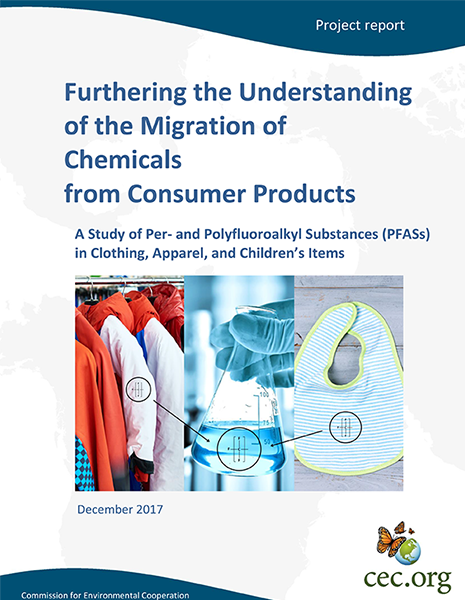Furthering the Understanding of the Migration of Chemicals from Consumer Products
A Study of Per- and Polyfluoroalkyl Substances (PFASs) in Clothing, Apparel, and Children’s Items
Furthering the Understanding of the Migration of Chemicals from Consumer Products
A Study of Per- and Polyfluoroalkyl Substances (PFASs) in Clothing, Apparel, and Children’s Items
Description
Persistent, bioaccumulative, and toxic (PBT) substances may occur at a global scale, which raises concerns for environmental and human health. Several perfluoroalkyl and polyfluoroalkyl substances (PFASs) have been shown to exhibit such PBT properties, with potential for transboundary and long-range transport. Perfluorooctane sulfonate (PFOS) and perfluorooctanoate (PFOA) are two of the most studied PFASs.
Despite the gradual phase-out of PFOS, PFOA, and certain related substances in Canada and the United States, many PFASs are used and permitted in consumer products, with possible implications for human exposure and environmental fate. The present survey examined 31 target PFASs in 137 articles of clothing and performance apparel (including children’s items) collected across North America during the 2017 summer season. The Commission for Environmental Cooperation (CEC) approved the project, Greening of Chemicals Management in North America, with a goal being the development of knowledge useful to chemical risk assessment and/or risk management in Canada, Mexico and the United States, the Parties to the CEC. Sampling and analyses were performed through joint efforts from Université de Montréal and McGill University.
Additional Information
